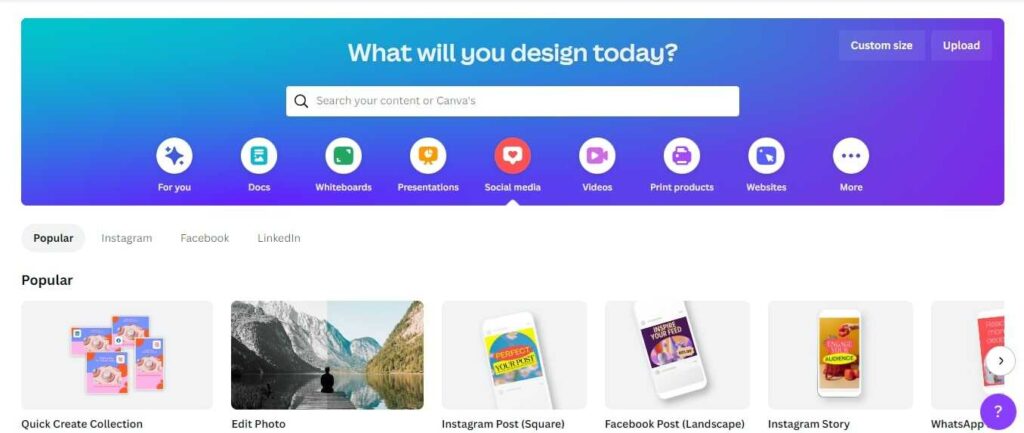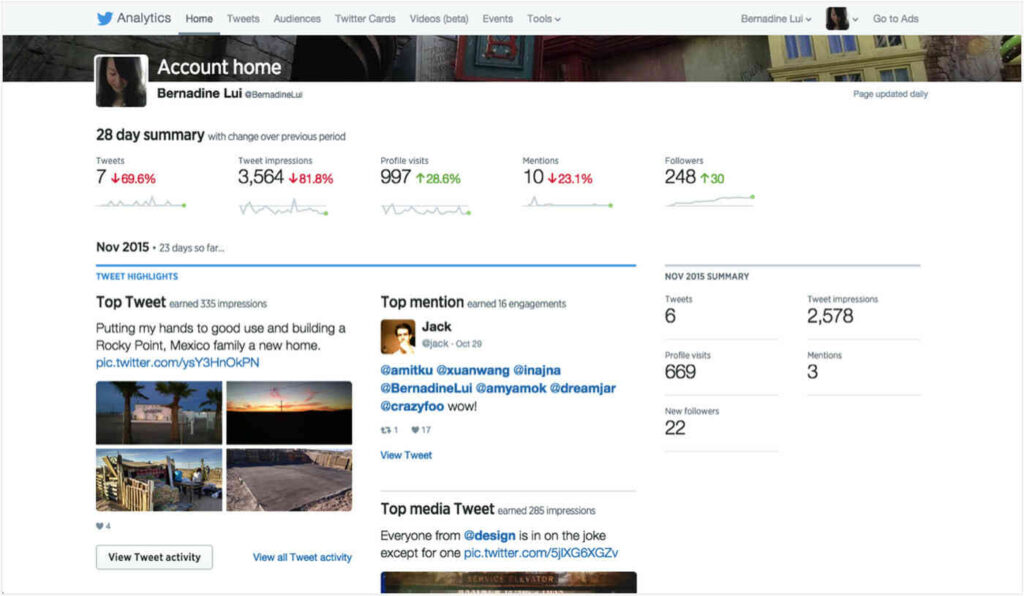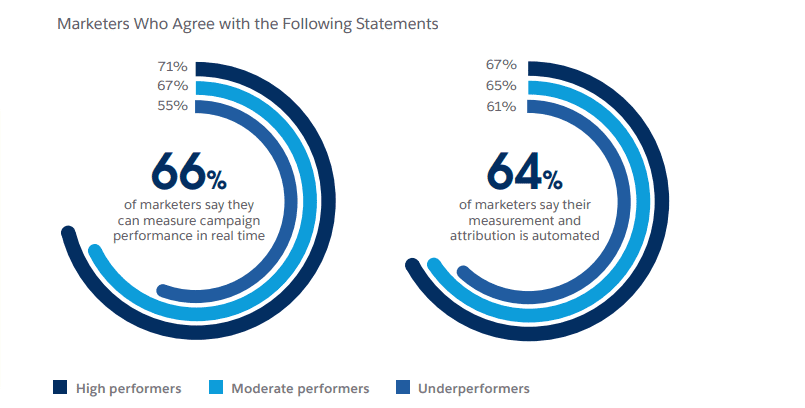As per Pew Research, over 76% of Americans use social media sites. Companies must be present where their customers are, and it is on social media.
Engagement is greater than ever, and marketers are using it to connect with customers throughout the consumer journey. Businesses’ participation on social media platforms is no longer a choice. It is a requirement.
Social media marketing allows businesses to communicate with followers, consumers, prospects, and collaborators.
So, in this guide, I’ll go over the steps to develop a social media marketing strategy to help you direct customers smoothly and drive sales to the company.
What is social media marketing?
It is a marketing approach where a business uses social media sites such as Instagram, Twitter, and Facebook to advertise and market its offerings.
Whenever your company releases a new product, has any news or updates to share, or simply wants to engage with your audience on social media, that is social media marketing.
It includes creating fascinating content that highlights your brand’s beliefs and stories.
For example, BuzzFeed launched a social media campaign, Tasty, that focused on teaching people how to cook easy, bite-sized snacks. This campaign was a huge success and generated millions of views, likes, and shares on its Facebook and Instagram pages.

This type of marketing demands that you have a certain level of capabilities and technology to handle social platforms. You must have a blueprint for your social media marketing efforts like you need one for any other kind of marketing.
With that said, let’s look at the steps to develop a strategy.
Steps to create a social media marketing strategy
To start with your social media endeavors, you must have a strategy. For that, consider the following steps:
- Decide your platforms
- Have an updated social profile
- Develop a content plan
- Choose between an organic or paid approach
- Create a publishing schedule
- Evaluate, experiment, and improve
- Automate your tasks
These are the general outline of your plan to give you an idea about creating a social media marketing plan.
Decide your platforms
Since there are numerous options available, and every one has its perks, this is probably the most challenging process of this guide. There are a lot of social media platforms out there, such as Twitter, YouTube, Instagram, Facebook, and LinkedIn.
All of these concentrates on a different method of providing content and appeals to a particular target market. So, you must consider the content types and the demographic you want to target.
For example, if you create video-based content, go for YouTube, Instagram, or TikTok. If you’re more inclined towards written or image content, select LinkedIn, Instagram, or Twitter.
Next, you have to find out whether your target audience is using that platform.
An excellent example of this is LinkedIn. If your content is oriented toward business professionals, then LinkedIn is a perfect choice. It is centered around the B2B target market with multiple options for engaging corporate minds.

Have an updated social profile
Make sure that your social media profile has everything regarding your business and is updated and accurate. These include photos, logos, brand names, and information about your company. For example, take a look at Google’s LinkedIn page.

A completed social media account displays you know what you are doing, provides cohesive branding, and signals visitors that you are serious about engagements.
At the core, social media accounts include two things images and written content.
When it comes to images, go for coherence and similarity between the images you utilize on social platforms. Your profile picture on Facebook should be similar to the one on Instagram, and the one on Twitter should match the cover of LinkedIn.
How can you create these photos? You can use any software available to design images for your social media marketing. For the sake of simplicity, you can use Canva, Pablo, Adobe Express, or Skitch, which include templates you can use or create from scratch.

For written content, a crucial section is your company’s bio. The process of writing a quality company bio for social platforms can be divided into these steps:
- Demonstrating what you have done is usually more effective than explaining it
- Customize your keywords based on your target market
- Minimize the use of clichés and use modern language
- Be friendly and approachable.
- Keep updating your profile
Develop a content plan
A correct content blueprint is critical for developing your business on social media. Your content should be able to do the following things:
- Engage with your target market
- Capture fresh fans
- Advertise your goods and solutions (not too much)
It is easier said than done, but every piece of content must have an objective. This is especially important for social media content since you have to make sure that it aligns with your overall strategy.
Choose between an organic or paid approach
There are a couple of approaches to social media marketing – organic or paid.
The organic one is perfect for new companies as it requires less investment and allows you to allocate capital to other things.
Paid strategy is great for large businesses and eCommerce sites that can afford an expensive method to establish social standing.
It is up to you to figure out which approach to implement based on your goals, resources, and assets.
Create a publishing schedule
How many posts are good each day? When is the right to post? What should be the content of your post? How many times a day you must post? These are all reasonable questions, but there is no right answer.
Everything depends on what is perfect for you. And to find that out, you have to test various combinations and see which provides the most response from your followers.
With that said, here are a few insights about what you should be posting and how frequently.
Things you should be publishing
In fact, as per Facebook’s Q2 financial reports for 2021, video content accounts for about 50% of the total time users spend on Facebook.
Video content is great for interactions. This is evident from the incredible success of TikTok and the frequent changes to Instagram.
The frequency of your posts
Multiple things affect how often you should post content on social media, like your niche, social media marketing budget, and the platform you have picked.
If your followers enjoy your posts, you can publish much more content. But, for a particular amount, here are a few tips:
- Twitter – 5 to 10 times a day
- TikTok – Thrice everyday
- Instagram – 1-2 times each day
- LinkedIn – Once per day
- Pinterest – 2 to 10 times each day
- Facebook – 3-times per week
After you have been carrying out your social media marketing activities for some time, you can look at your analytics to see when and how often you should post and then optimize your plan.
Evaluate, experiment, and improve
Keep in mind that social media activities differ from person to person. Not everyone is active on social media platforms at the same time. That is why in the beginning, your analytics might show mixed, confusing results.
As you go further in your marketing strategy, you’ll see a clearer picture of the kind of content you should post, how often, and when.
How can you view your data? The best choice is to use analytics software. Most of the big social media platforms consist of an analytics tool. But you can also use an external one to access this data.
You’ll get insights about the performance of every post, such as the likes, shares, comments, clicks, and impressions. For example, here is the desktop view of the analytics dashboard for Twitter.

Image Source: Twitter
Still confused? Here’s an approach you can try to see how well you’re doing:
Decide a metric. Once you have been posting content for a couple of weeks or a month, look at your numbers and analyze the engagement rate for each post. This will be the metric to measure yourself on in the future.
Make sure that you go back and keep updating this metric as you increase your fans and standings.
Another thing to remember is to keep trying fresh things. Social media is continuously changing, and you must be ready to adapt. Always have a modern mindset and optimize your marketing plan according to recent trends.
Automate your tasks
The last step of your social media marketing strategy is to develop a procedure to help you be ahead of current happenings and interact with your followers accordingly.
Not only that, but you can also set up automation to monitor your campaign in real-time and gather data automatically.
In fact, according to Salesforce’s 7th State of the Marketing research, 66% of marketing professionals monitor campaign performance in real time, and 64% have their measurement and attribution process automated.

Image Source: Salesforce
With that said, automating your posts is the first step in this direction. The software available in the market lets you generate your content in advance and set up a timeline to publish this content automatically.
This streamlines your everyday tasks and allows you to produce quality content in the long run.
Why stop at just content? Social media needs interactions as well. So you can pick a time slot and reply to the users who commented or posted something related to your content.
An approach to handling this is to use automation software to gather everything that requires a response from your side. This way, you can efficiently respond to your audience on time.
Conclusion
With the growth of social media platforms and the increased number of users, it’s obvious why companies and marketing professionals utilize them to advertise their goods and interact with consumers.
Even though creating a social media strategy for your business may look difficult, you can prevent yourself from getting stressed by analyzing marketing patterns and utilizing the existing content.
So, what are you waiting for? Start developing your social media marketing plan to grow your fan base, enhance interactions, and increase sales.